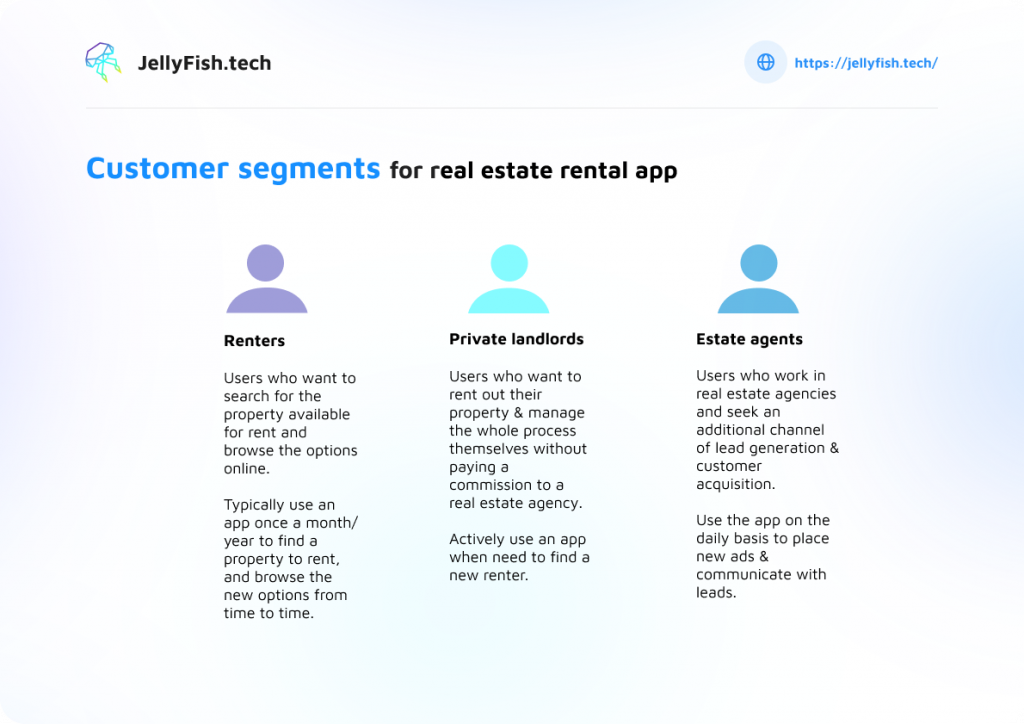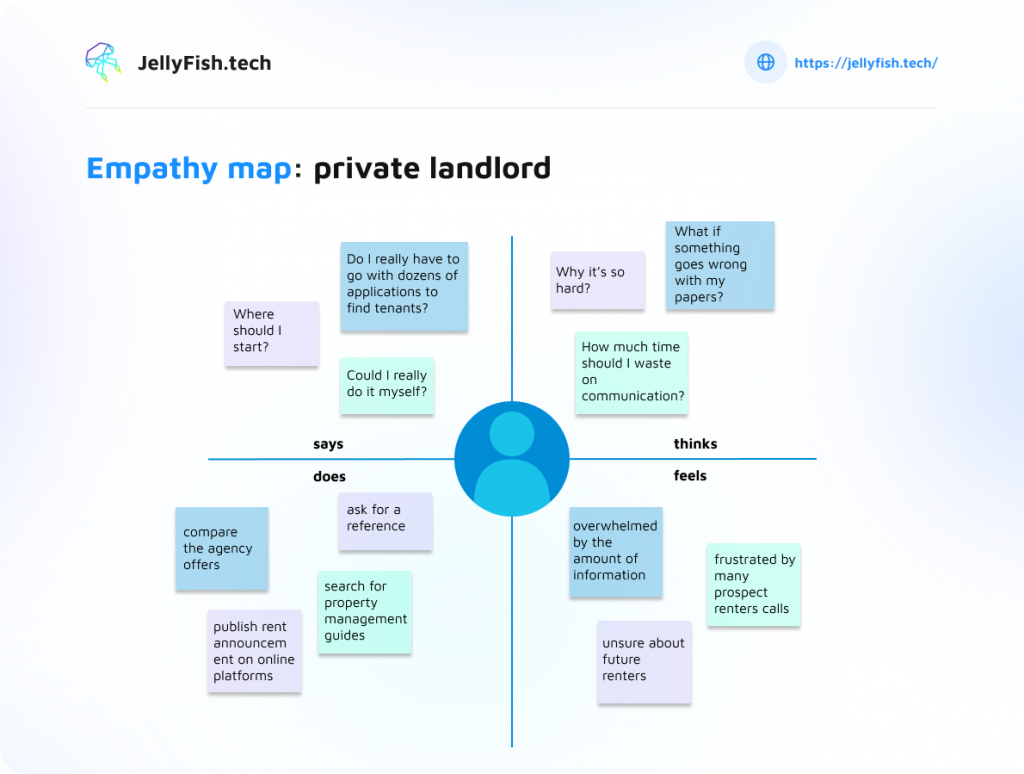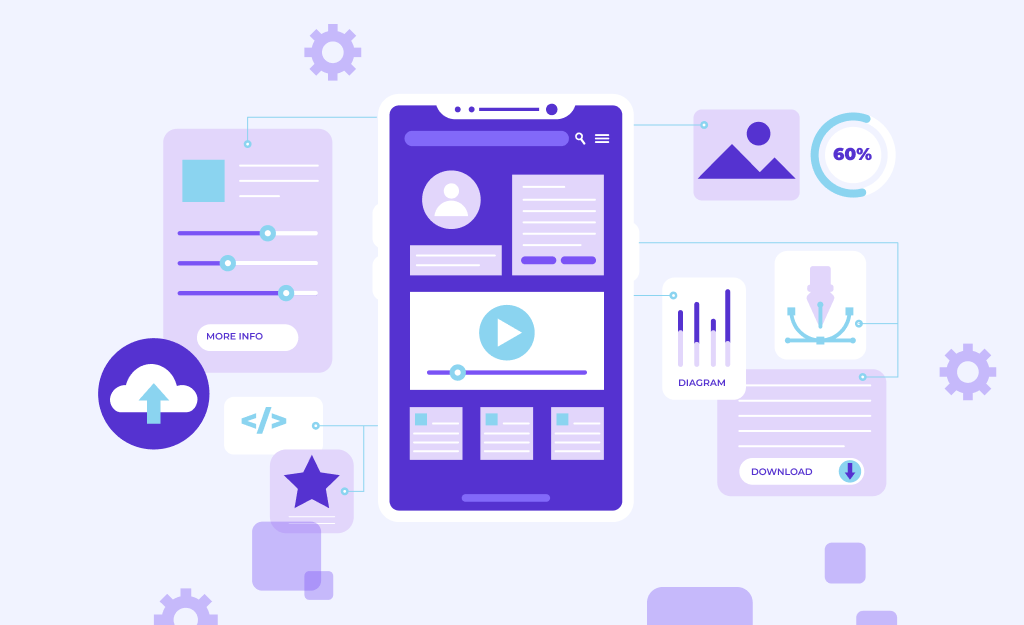Why Your Product Needs User Experience Research
Designing an impeccable customer experience begins with thorough user research.
Starting building a new application with user research is always a good idea, as you create your product having a specific target audience in mind. So, understanding the needs of your end-user is one of the most effective areas of research, in which a startup can invest.
However, there’s a problem: as soon as you start googling what user research is and how to start, you come across a ton of articles where the amount of information could be really overwhelming.
So let’s figure out why any digital product requires user research & which steps could you take to learn more about your target customers together with our UX designer.
Contents:
- What is user research and why does it matter?
- User research process & deliverables
- Competitor analysis
- Analysis of several segments of the target audience
- Surveys and interviews
- Creating personas based on target audience analysis
- Gathering information about the goals and concerns of the target audience
- Creating custom user scenarios
- Creating a board with visual elements fitting a specific project
- Client’s role in UX research
- Wrap up
What is user research and why does it matter?
User experience (UX) research seeks to understand target customer behavior and needs through observation, analysis, interviews to use this data when building a digital product.
The research allows you to create an application that meets actual customer demand, finding out the following:
- who your target people are, their background, motivation, & pain points.
- context, in which your audience will use the product or service.
- what features they exactly need.
This is a crucial stage of working on the product that helps your team choose the right direction and avoid spending lots of money on the MVP nobody will appeal to.
Who needs to get user research done?
Those who create the first version of the product (MVP)
When creating a product from scratch, we start by identifying the top features your users require and the best ways of their implementation.
That’s why conducting user research in the very beginning plays a key role in developing an appealing & functional minimum viable product your customers will love. It’s always easier to start with the research on which your features will be based than redo them after your MVP is ready.
P.S. However, if your budget is very limited, you can still skip this stage to come back to this later, accepting the possible risks, as UX research could bring value at any stage of product development.
Those who want to improve the existing product
As investing in user retention costs less for the companies than acquiring new customers, improving customer satisfaction is one of the most effective activities you can work with.
No matter how many users your product has and how successful it is on the market: user research is still needed to keep pace with the ever-changing technology, evolving user needs, and UX design innovations.
So, for keeping your product up-to-date, you need to have your finger on the pulse, checking the analytics of your product’s usage, tracking the important statistics, and re-estimating the user interface & user experience periodically. This will help you quickly identify the weaknesses and take steps to fix them.
As a rule, you should have UX research done each time you want to add a new feature or feel like enhancing your product (or its part).
With UX research, you can get answers to your questions, polish your unique sales proposition, or offer a better solution for your target group.
So, let’s agree that quality user research will help your business achieve its goals, delivering more value to your customers.
User research process & deliverables
When developing and/or improving a product, we should start our UX research by choosing the best-fitting methods, tailoring them to your specific industry & project type, and defining your main goals.
As an example, I offer you to look at the process and results of UX research we do at Jellyfish.tech. Of course, the research steps could differ from project to project depending on its background, industry, purpose, target audience — we customize the methods and steps to fit a particular project.
Typically, UX study involves two parts:
- data collection and synthesis (we conduct surveys/interviews to gather as much information as we can, communicate with potential or current users, go through the product analytics);
- development of UI/UX solutions based on the data (the final result of the research could be delivered in many different ways depending on project type and primary goals).
Let’s look at the main steps for UX research.
Competitor analysis
An important step for user research that will help:
- understand how your product may differ from others, and the ways to make it unique;
- identify user needs and pain points that are not covered by any of the competitor services;
- define the precise design requirements for the development of a new product or feature.
Deliverables. Competitor’s report / presentation / features comparison depending on the primary goals.
Analysis of several segments of the target audience
The first thing to do is to divide your target audience into several small groups to work with (by age, areas of activity, interests, etc. — here we should define what’s important for our specific product). Segmentation will help you better formulate your unique selling proposition (USP) for each target group and personalize the marketing approach, as you create the custom offers, ads, and craft the copies based on the customer segment.
Deliverables. Map of high-level audience segments.

Surveys and interviews
Surveys & interviews are an effective way to find out what your (future) users think, revealing two kinds of data: quantitative and qualitative.
Surveys that have answer choices help you get quantitative data (a set of numbers that show patterns). For an online conferencing application, the example of the question could be: “Is it convenient for you to make notes during the meetings manually?” (if not, it means you should think of adding a voice-to-text converter).
For a booking app, it may be “How fast can you reach the target page?” (if your users can’t do it in a few clicks, it could mean your navigation requires improvement).
! Of course, the exact list of questions will depend on the type of product you’re building or are about to build.
You can send out such surveys to many people at once to get statistically significant results.
Qualitative data is free-form information: observations, video recordings, interview texts, open responses. Qualitative data helps us understand the reasons for the patterns we get from quantitative data.
Creating personas based on target audience analysis
A persona is a generalized but realistic description of a product target user. Keeping on segmenting your users, you should define which information about your future buyers you need to know and describe your personas as if they are real people.
The goal of this step is to create detailed buyer profiles, each of which will be a collective image of a particular group of your target audience. Based on the user profile, you will be able to make smarter, more informed decisions about the product: determine which features would be useful to users, which logo they would respond to better, or to which copy would they appeal.

Gathering information about the goals and concerns of the target audience
Going deeper into user personas, we’re now dealing with people’s emotional sphere that is closely connected with forming a buying intention, choosing a product to purchase, and cooperating with a brand.
Without knowing the needs of the target audience, it is difficult to build a successful retention strategy. This directly influences the most important marketing indicators as well, such as the cost of customer acquisition and the number of purchases your customers do for the entire period of cooperation with the company.

Creating custom user scenarios
Basically, user scenarios are a visualization of a buyer persona journey when achieving their goals by interacting with your product or application.
Thanks to the scenarios, we can build a product map, identify both the quickest ways for the customer to reach a goal and the problems your users might have when interacting with your product, and generate ideas for product enhancement.
Deliverables. User flows/user scenarios for every buyer persona done in any form that is convenient for both the UX designer and the customer.
Creating a board with visual elements fitting a specific project
Our main task here is to search for and add the elements that visualize the product concept on the board with due respect to the data we got at the previous stages.
Starting to assemble our project references piece by piece, we keep in mind the primary UX research goals to either focus on several important things (fonts & colors/features/illustrations & icons) or cover everything at once.
Deliverables. A visualization of elements, colors, features, icons, illustrations for a specific product.
Gathering and documenting information about the project
This is the final step of the UX study, in which we systematize all the data collected at the different stages (ideas, goals, to-be-done tasks, project structure, limitations, customer feedback, etc.) streamline it to craft the recommendations for further product development, and deliver project-specific solutions.
Client’s role in UX research
Of course, you can do the UX research yourself in case you have the necessary background or experience in conducting user research. However, it’s often easier to hire someone capable of doing the job well, as it will save your time and enhance the results’ accuracy.
If you decide to hire a professional to conduct user research, you still have to be constantly engaged in the process.
Starting from filling in a brief (for a website or for a mobile app) that covers the company and project background, your goals & content — all the basic information one needs to “get acquainted” with your product or idea — to answering the open questions and sharing the valuable insights about your industry, company, and customers.

“The fact is nobody knows your product, niche, and target audience better than you — a UX researcher could do all the job, but they still need your ideas, approval, business experience, and engagement to make sure the time & money we spend on UX research won’t be wasted.”
Igor, UX/UI Designer
So, we strongly recommend keeping in touch with your UX designer.
Wrap up
The UX research lays the foundation for the next stages of product creation, as understanding the audience allows for:
- proper product positioning;
- crafting a killer value proposition;
- building an intuitive & simple user interface;
- defining the features your users really want;
- selecting the right marketing channels.
Once the research is complete, the team gets a detailed understanding of the problem, the right direction to work in, and the results to strive for.
The UX research may also help generate backlog task ideas that can be implemented and tested in the future.
Ignoring the user experience research can lead to remaking the features/modules after the release of your MVP or completely redesigning the interface. And the older the project is, the more confusing and costly it becomes to introduce the fundamental changes.
So, keeping up your product with the best UX/UI practices, do your UX research now:)
🧚♂️ Get a free UX consultation:
Resources:
- IDEO: The Human-Centered Design Toolkit
- UX Planet on Medium
- What is the framework for innovation? Design Council’s evolved Double Diamond
- NNGroup: UX Research Cheat Sheet




